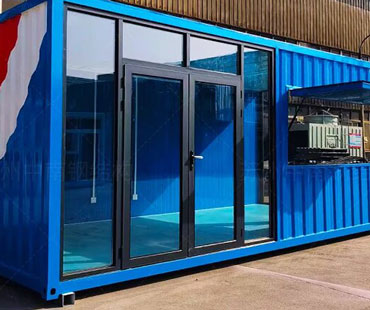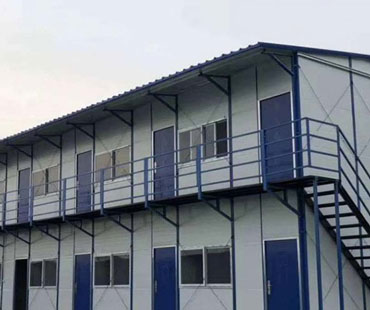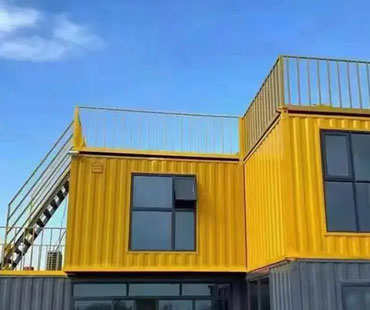In recent years, the construction industry has faced significant challenges, including rising costs, environmental concerns, and the need for sustainable living solutions. Amid these challenges, container homes have emerged as a transformative approach to housing, particularly in China. By repurposing shipping containers into livable spaces, the concept of container homes is not only innovative but also aligns with eco-friendly practices that are becoming increasingly vital in today's world.
Container homes are built using repurposed shipping containers, which are typically made of steel and designed to be durable and weather-resistant. These containers can be transformed into comfortable living spaces, providing a unique alternative to traditional building methods. The process involves retrofitting the containers with insulation, plumbing, electrical systems, and interior finishes to create functional homes.
Advantages of Container Homes
1.Sustainability: One of the most significant advantages of container homes is their contribution to sustainability. By reusing shipping containers, builders can reduce waste and lower the demand for new construction materials. This not only minimizes the environmental impact but also promotes the recycling of materials that would otherwise contribute to landfill overflow.
2.Cost-Effectiveness: Container homes can be more affordable than traditional homes. The cost savings stem from the reduced material requirements and faster construction times. In a country like China, where housing affordability is a pressing issue, Container Homes China present a viable solution for low- and middle-income families.
3.Speed of Construction: The modular nature of container homes allows for rapid construction. Since the containers are pre-fabricated structures, they can be quickly modified and assembled on-site. This efficiency can significantly reduce the time required to complete housing projects, addressing urgent housing needs in urban areas.
4.Mobility and Flexibility: Container homes are inherently mobile, making them an excellent option for temporary housing solutions or mobile offices. This flexibility allows for easy relocation, catering to a variety of needs, such as disaster relief or seasonal housing.
5.Customizability: While container homes start with a standard structure, they can be easily customized to meet individual preferences. Homeowners can choose different layouts, finishes, and features, allowing for a personalized living space that reflects their lifestyle and aesthetic preferences.

Eco-Friendly Practices in Container Home Construction
The construction of container homes in China is not just about the use of recycled materials; it also embraces various eco-friendly practices:
-Energy Efficiency: Many container homes are designed with energy efficiency in mind. Incorporating features such as high-quality insulation, energy-efficient windows, and solar panels can significantly reduce energy consumption. By harnessing renewable energy sources, these homes can minimize their carbon footprint and lower utility bills for residents.
-Water Conservation: Innovative plumbing systems can be installed in container homes to promote water conservation. Rainwater harvesting systems, greywater recycling, and low-flow fixtures are common features that help reduce water usage, making these homes more sustainable.
-Green Landscaping: The design of container homes can incorporate green landscaping elements, such as rooftop gardens or vertical gardens, which not only beautify the living space but also contribute to biodiversity, improve air quality, and enhance energy efficiency.
-Sustainable Materials: In addition to repurposing shipping containers, builders often use sustainable materials for interior finishes and furnishings. This includes eco-friendly paint, reclaimed wood, and recycled materials, further reducing the environmental impact of the construction process.
Several projects in China exemplify the successful implementation of container homes as sustainable housing solutions:
1.Urban Container Communities: In cities like Shanghai and Beijing, developers have created container home communities that offer affordable housing options for urban workers. These developments typically include amenities such as shared gardens, community spaces, and recreational areas, fostering a sense of community among residents.
2.Disaster Relief Housing: Following natural disasters, container homes have been deployed as temporary housing solutions for displaced families. Their mobility and quick assembly make them ideal for providing immediate shelter while more permanent housing solutions are developed.
3.Student Housing: Some universities in China have adopted container homes for student accommodation. These units provide affordable and comfortable living spaces while promoting sustainable practices among young adults.
While container homes offer numerous benefits, there are also challenges that must be addressed:
-Zoning and Regulations: Local building codes and zoning regulations may pose hurdles for the widespread adoption of container homes. Navigating these regulations can be complex, and advocates for container housing must work with policymakers to create supportive frameworks.
-Perception and Acceptance: There can be societal stigma associated with living in container homes, often perceived as temporary or substandard. Overcoming this social perception requires education and awareness campaigns that highlight the benefits and aesthetics of container homes. As more successful projects emerge, public acceptance may gradually improve.
-Insulation and Climate Adaptation: While shipping containers are durable, they can also be susceptible to extreme temperatures. Proper insulation is crucial to ensure energy efficiency and comfort. Builders must employ advanced insulation techniques to address issues related to heating and cooling in various climates across China.
The future of container homes in China looks promising as the demand for affordable and sustainable housing continues to grow. With increasing urbanization and a shortage of affordable housing options, container homes provide a practical solution that aligns with modern environmental goals.
1.Government Support: As awareness of the benefits of container homes rises, local governments may introduce policies and incentives to encourage their development. Supportive legislation can help streamline the approval process and promote the use of eco-friendly building practices.
2.Technological Advancements: As technology evolves, so will the design and construction of container homes. Innovations in building materials, energy systems, and smart home technologies will enhance the functionality and appeal of these homes. Features such as smart home automation and advanced energy management systems can further improve sustainability.
3.Cultural Integration: Future container home designs may incorporate elements of traditional Chinese architecture, ensuring that these modern structures harmonize with local cultural aesthetics. This integration can make container homes more appealing to a broader audience, bridging the gap between contemporary and traditional living.
4.Community Development: Beyond individual homes, the concept of container home communities can foster social interaction and collaboration. Developers can create integrated neighborhoods that promote a sense of belonging and community engagement, further enhancing the quality of life for residents.
Container homes China represent a revolutionary shift in the construction industry, offering sustainable, affordable, and innovative housing solutions. By repurposing shipping containers and embracing eco-friendly practices, these homes not only address the pressing need for affordable housing but also contribute positively to the environment.
As the world moves towards more sustainable living practices, container homes are poised to play a significant role in shaping the future of housing in China and beyond. By overcoming challenges related to regulations and societal perceptions, and by leveraging technology and community development, container homes can become a mainstream option that embodies the principles of sustainability and modern living.
With continued efforts to promote their benefits and expand their acceptance, container homes will undoubtedly leave a lasting impact on the construction industry and pave the way for a more sustainable future.


